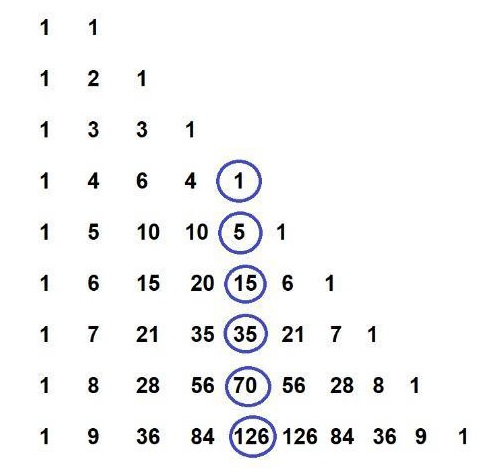
 Data Structure
Data Structure Networking
Networking RDBMS
RDBMS Operating System
Operating System Java
Java MS Excel
MS Excel iOS
iOS HTML
HTML CSS
CSS Android
Android Python
Python C Programming
C Programming C++
C++ C#
C# MongoDB
MongoDB MySQL
MySQL Javascript
Javascript PHP
PHP
- Selected Reading
- UPSC IAS Exams Notes
- Developer's Best Practices
- Questions and Answers
- Effective Resume Writing
- HR Interview Questions
- Computer Glossary
- Who is Who
C++ Pentatope Number
A pentatope number is described as the fifth number in the pascal’s triangle. Now, as you know, it’s the fifth number, so it means that we need to have at least five numbers in the pascal’s triangle, so this series’ first number starts from 1 4 6 4 1 the fourth row of pascal’s triangle. So, In this given tutorial, we are required to find the nth pentatope number, for example
Input : 1 Output : 1 Input : 4 Output : 35
You can check the output from the following diagram −

Now for this problem, as you can, this is a type of series, so we try to find out the pattern for this series in the solution.
Approach to Find the Solution
In this program, we will find a general formula for this series which every number follows. Then we need to put our values to the formula, and then we get the output.
Example
C++ Code for the Above Approach
#include<bits/stdc++.h>
using namespace std;
int answer(int n){ // function to find the value of nth pentatope number
return (n * (n+1) * (n+2) * (n+3))/ 24; // the formula that we derived
}
int main(){
int n = 6; // the pentatope number that we need to find
cout << answer(n) << "\n";
n = 4;
cout << answer(n) << "\n";
return 0;
}
Output
126 35
The overall complexity of the above code is O(1) which means it works in constant complexity, and this is the best time complexity that we can achieve because our time doesn’t depend on the input size so that we can calculate answers at the same time for any input.
Understanding the Code
In the above approach, as you know, we were trying to find out the pattern of the series and trying to devise a general formula from that pattern. Now the formula that we came up with was (n * (n + 1) * (n + 2) * (n + 3)) / 24 where n is the term which we need to find.
Conclusion
In this tutorial, we solve a problem to find the Nth Pentatope number by devising a formula for it. We also learned the C++ program for this problem and the complete approach we solved. We can write the same program in other languages such as C, java, python, and other languages. We hope you find this tutorial helpful.

